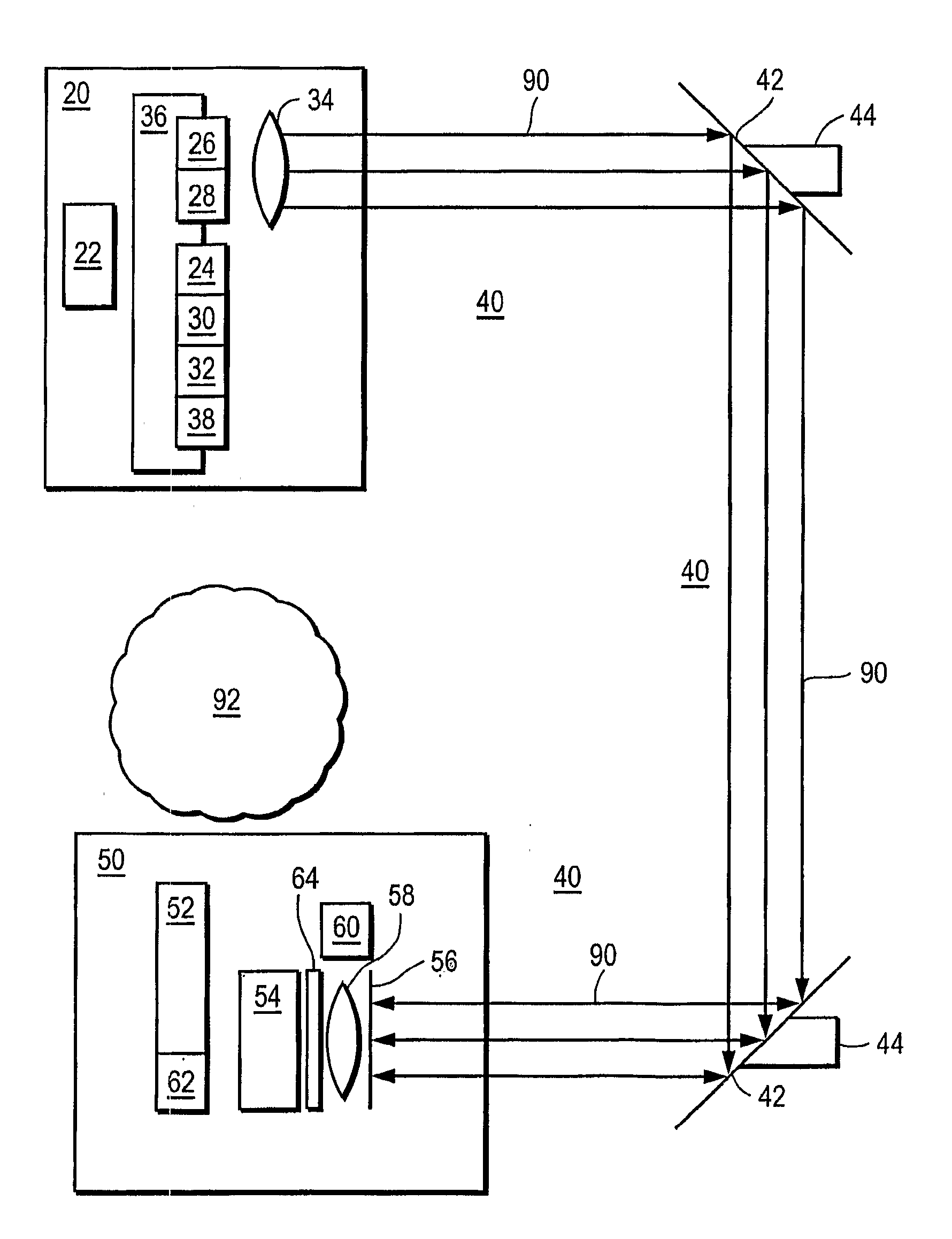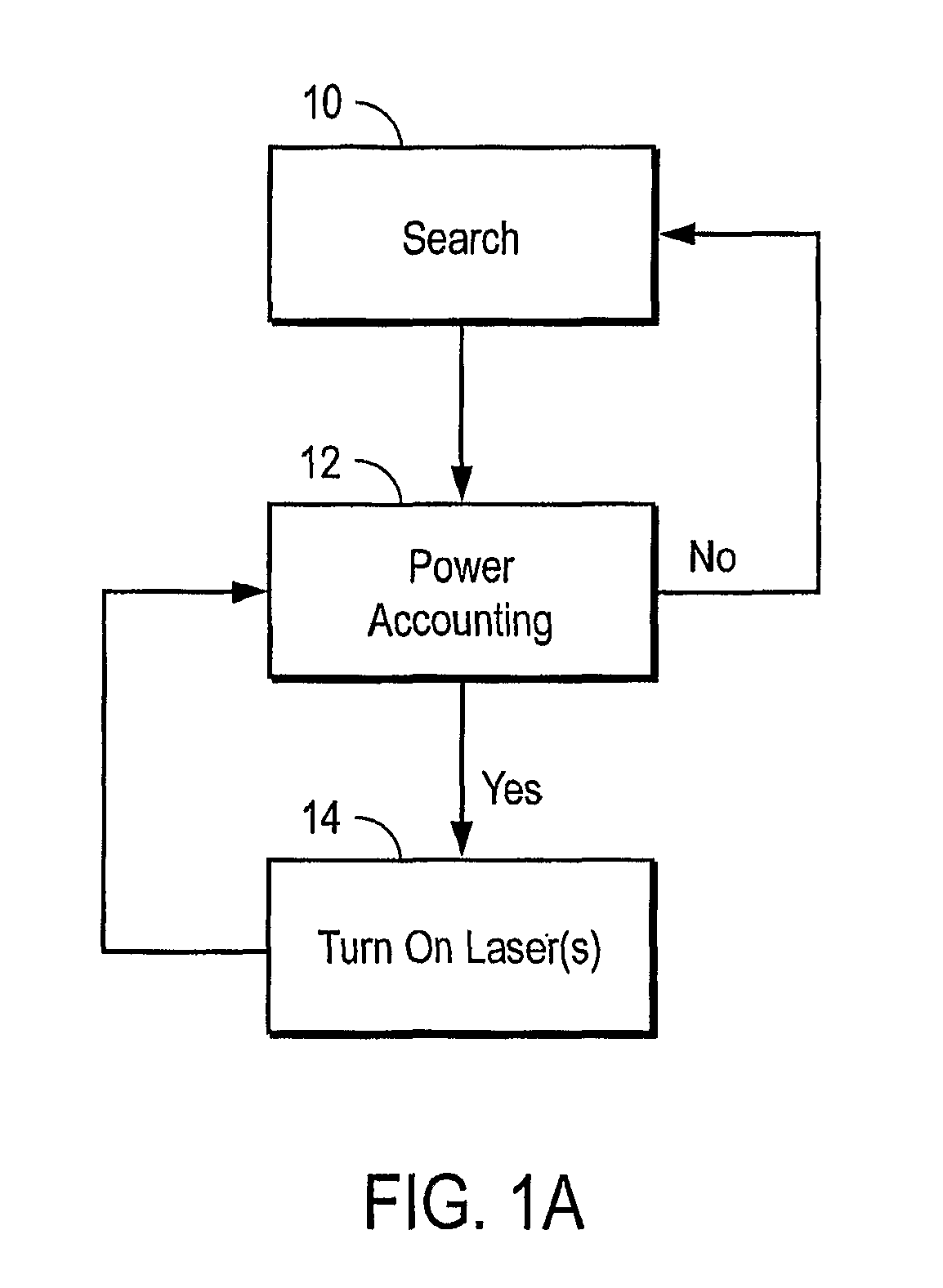Optical Power Beaming to Electrically Powered Devices
a technology of optical transmission and electrical power, applied in the direction of optical radiation measurement, discharge tube/lamp details, instruments, etc., can solve the problems of insufficient outlets for all devices requiring power, cords can get tangled or become trip hazards, etc., to achieve convenient and aesthetic value, safe supply of power without cords or cables, and reduce the congestion of wall outlets
- Summary
- Abstract
- Description
- Claims
- Application Information
AI Technical Summary
Benefits of technology
Problems solved by technology
Method used
Image
Examples
Embodiment Construction
[0040]As shown in the examples of FIGS. 2 and 3, one embodiment of the wireless power beaming system includes a transmitter assembly 20, a free space optical path 40, and an optical-to-electric power converter 50 for the device being powered. Transmitter assembly 20 converts electricity to light 90. The light 90 travels through free space 40 to an optical-to-electric power converter 50.
[0041]In one embodiment, the transmitter assembly 20 can include a high-efficiency, eye-safe, light source 26 to transmit power; lens(es) 34 and pointing mechanism 36 for focusing and aiming the lasers; and a CPU 22. For example, a laser light source 26 can operate at wavelengths greater than 1400 nm. Examples of such lasers are made by nLight Photonics, Inc, Princeton Lightwave, Covega, and other manufacturers. Light 90 from the laser(s) 26 passes through lens(es) 34 for focusing and aiming the lasers. In a preferred embodiment, the outgoing light 90 is nearly collimated, has a substantially uniform ...
PUM
| Property | Measurement | Unit |
|---|---|---|
| wavelength | aaaaa | aaaaa |
| wavelengths | aaaaa | aaaaa |
| power | aaaaa | aaaaa |
Abstract
Description
Claims
Application Information
 Login to View More
Login to View More - R&D
- Intellectual Property
- Life Sciences
- Materials
- Tech Scout
- Unparalleled Data Quality
- Higher Quality Content
- 60% Fewer Hallucinations
Browse by: Latest US Patents, China's latest patents, Technical Efficacy Thesaurus, Application Domain, Technology Topic, Popular Technical Reports.
© 2025 PatSnap. All rights reserved.Legal|Privacy policy|Modern Slavery Act Transparency Statement|Sitemap|About US| Contact US: help@patsnap.com



